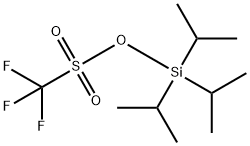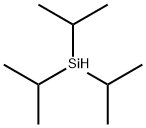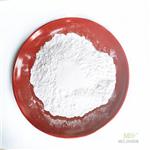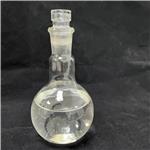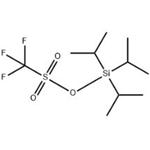Chemical Properties
clear light brown to orange-brown liquid
Physical properties
Colorless oil; bp 83–87 °C/1.7 mmHg; d 1.173
g cm?3.
Uses
Triisopropylsilyl trifluoromethanesulfonate is used as a reagent for the introduction of triisopropylsilyl(TIPS) group in organic synthesis. It is involved in the synthesis of 2-substituted benzothiopyran-4-ones and silyloxy acetylenes. As a protecting group in organic synthesis, it is utilized especially for the protection of primary amines. Furthermore, it plays an important role in Takahashi Taxol total synthesis or for chemical glycosylation reactions.
Uses
Triisopropylsilyl Trifluoromethanesulfonate is a highly reactive silylating agent and Lewis acid capable of converting
primary and secondary alcohols to the corresponding triisopropylsilyl
ethers and converting ketones and lactones into
their enol silyl ethers; protection of terminal alkynes; promoting
conjugate addition of alkynylzinc compounds to α,β-enones;
preparation of (triisopropylsilyl)diazomethane, participating in the following (but not limited to) reactions: Silylation of Alcohols, Formations of Enol Silyl Ethers, Alkynyltriisopropylsilanes, Conjugate Addition of Alkynylzinc Bromides, (Triisopropylsilyl)diazomethane, Triisopropylsiloxycarbonyl (Tsoc) and BIPSOP Protecting Groups for Amines, TIPS Protection for Oxazoles/Regioselective Trapping of C-2 Oxazole Anions, Benzannulation Using Triisopropylsilyl Vinyl Ketenes, Cyclization of 1-Silyloxy-1,5-diynes, Desymmetrization of Tartaric Acid Esters etc.
Preparation
To 38.2 g (0.242 mol) of triisopropylsilane
at 0°C under argon is added 23.8 mL (0.266 mol) of trifluoromethanesulfonic
acid dropwise. The solution is stirred at
22°C for 16 h, at which time no further hydrogen gas evolves
(removed through a bubbler). The resulting product is distilled
through a 30-cm vacuum jacketed Vigreux column under
reduced pressure: 71.7 g (97% yield) of TIPS triflate;
bp 83–87°C/1.7 mmHg.
Reactivity Profile
Triisopropylsilyl Trifluoromethanesulfonate is a highly reactive silylating agent and Lewis acid capable of converting primary and secondary alcohols to the corresponding triisopropylsilyl ethers and converting ketones and lactones into their enol silyl ethers; protection of terminal alkynes; promoting conjugate addition of alkynylzinc compounds to α,β-enones; preparation of (triisopropylsilyl)diazomethane).
References
[1] Rücker, C. “1,3‐Bis(triisopropylsilyl)propyne.” 2001. 0.
[2] Fumihiko Yoshimura. “Nucleophilic Addition of Alkanenitriles to Aldehydes via N-Silyl Ketene Imines Generated In Situ.” Synlett 29 1 (2017): 1816–1820.
